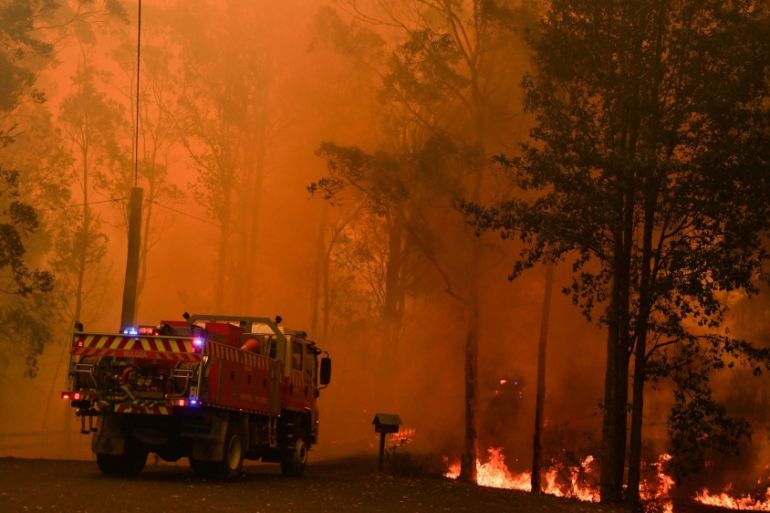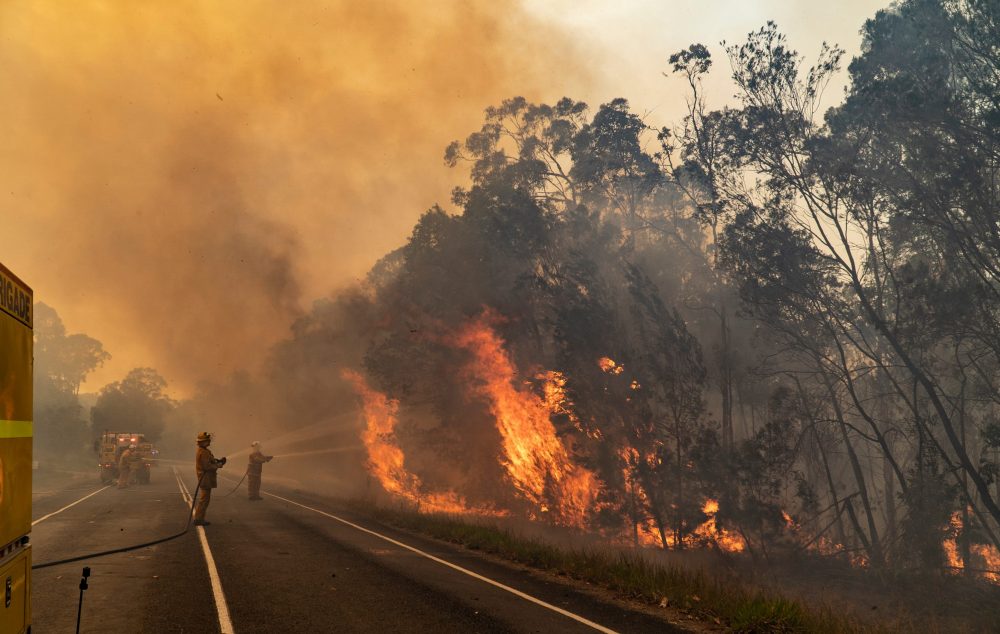Crafting Your Residential or commercial property's Safety: A Detailed Bushfire Management Plan Guide
Crafting Your Residential or commercial property's Safety: A Detailed Bushfire Management Plan Guide
Blog Article
Expert Recommendations on Bushfire Monitoring for Enhanced Fire Protection
In the world of bushfire management, the importance of expert guidance can not be overemphasized. From comprehending the subtleties of bushfire actions to implementing practical steps such as firebreaks and defensible areas, there exists a wealth of understanding that can dramatically enhance fire security initiatives.
Recognizing Bushfire Actions
To properly reduce the effect and manage of bushfires, it is vital to have a thorough understanding of bushfire habits. Bushfires are complicated natural phenomena influenced by different aspects such as weather problems, topography, fuel lots, and human activities. Comprehending just how these aspects connect is important in anticipating the habits of a bushfire, permitting much better preparation and action strategies.
One trick aspect of bushfire behavior is fire spread. This incorporates the price at which a fire breakthroughs, the direction it takes, and the strength of the flames. By studying past fire events and examining fire patterns, specialists can expect just how a bushfire could advance under specific problems. Bushfire Risk. This understanding is critical in creating evacuation plans, allocating firefighting resources effectively, and executing risk decrease actions.
In addition, understanding ember assault, identifying, and fire whirls is important in grasping the full degree of bushfire habits. By diving right into these ins and outs of bushfire behavior, authorities can enhance their readiness and reaction abilities, ultimately lowering the influence of these damaging occasions.
Implementing Firebreaks and Defensible Rooms
Comprehending bushfire behavior is foundational for efficiently executing firebreaks and developing defensible spaces to enhance fire defense. Preserving these firebreaks through regular clearing of debris and plant life is necessary to guarantee their performance throughout a bushfire event.

Effectively applying firebreaks and defensible areas calls for precise planning, regular maintenance, and area participation to make sure the highest degree of fire defense for residential properties and lives in bushfire-prone locations.
Using Very Early Warning Equipments
Releasing sophisticated very early caution systems is essential for timely detection and signaling of prospective bushfire dangers. By utilizing advanced technologies such as satellite tracking, climate sensing units, and thermal imaging, authorities can successfully find and monitor fire-prone locations ignition resources at the earliest stages. These systems can offer real-time data on fire instructions, actions, and intensity, permitting prompt decision-making and fast deployment of firefighting sources to the influenced areas.
Early warning systems likewise play an essential duty in signaling citizens and communities about impending bushfire dangers. With automated alarms, message signals, call, and social media notifications, individuals can be swiftly educated about emptying orders, safe sanctuary places, and emergency treatments. This aggressive technique not just conserves lives however likewise reduces home damages by guaranteeing that individuals have adequate time to leave and protect their homes.
Developing Evacuation Plans
Reliable evacuation plans are important for making sure the safety and security of residents in bushfire-prone locations. Developing well-thought-out evacuation methods is crucial in alleviating the risks postured by bushfires and protecting human life. These plans must try this out be comprehensive, taking into consideration various elements such as the topography of the area, the thickness of vegetation, and the most likely speed and instructions of the fire's spread.
When developing evacuation strategies, it is very important to establish clear discharge routes and setting up factors where homeowners can gather securely. These paths must be regularly preserved to make sure ease of access throughout here are the findings emergency situations. In addition, communication approaches should remain in location to alert citizens of unavoidable risk and provide clear guidelines on evacuation procedures.
Partnership in between neighborhood authorities, emergency services, and neighborhood members is important in creating reliable evacuation plans. When a bushfire endangers the area, normal drills and exercises must be performed to familiarize locals with the procedures and make certain a swift and arranged evacuation (Bushfire Management Plan). By prioritizing the development of robust discharge strategies, neighborhoods can boost their strength to bushfire emergencies and reduce the potential influence on properties and lives

Taking Part In Area Readiness
In the realm of bushfire administration, cultivating area preparedness plays a pivotal role in fortifying the strength of homeowners living in risky areas. Taking part in community preparedness entails enlightening residents on bushfire dangers, advertising fire security practices, and establishing emergency plans collectively. By proactively entailing the area in preparedness initiatives, people end up being more educated and empowered to take positive actions to protect their lives and properties throughout bushfire incidents.
Neighborhood preparedness campaigns usually consist of conducting fire drills, establishing interaction networks, and organizing training sessions on fire suppression methods. Additionally, urging cooperation among next-door neighbors to create a cohesive support group can substantially boost the total preparedness degree of a neighborhood. The probability of lessening damages and making certain safety and security rises substantially. when residents are well-informed and furnished to respond efficiently to bushfires.
Conclusion
To conclude, effective bushfire monitoring calls for a thorough understanding of fire actions, the execution of firebreaks and defensible spaces, the usage of early warning systems, the development of emptying plans, and community involvement in readiness initiatives. By incorporating these techniques, neighborhoods can improve their fire security steps and minimize the effect of bushfires on both residential property and lives. Bushfire Management Plan. It is essential for all stakeholders to interact to create a more secure setting despite this all-natural catastrophe
To properly manage and mitigate the effect of bushfires, it is essential to have a thorough understanding of bushfire actions. By studying previous fire cases and examining fire patterns, specialists can expect how a bushfire may advance under details conditions.Recognizing bushfire behavior is fundamental for properly implementing firebreaks and producing defensible areas to click to read boost fire defense. Involving in community preparedness includes enlightening residents on bushfire dangers, promoting fire security practices, and developing emergency situation plans collectively.In conclusion, reliable bushfire monitoring requires a comprehensive understanding of fire actions, the execution of firebreaks and defensible rooms, the application of very early warning systems, the advancement of emptying strategies, and area interaction in preparedness initiatives.
Report this page